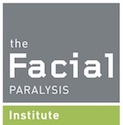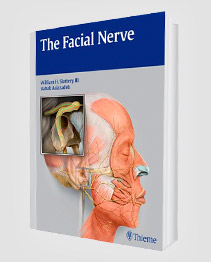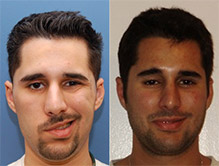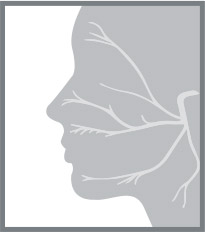Dealing with facial paralysis can be really tough, affecting how you look, how you talk, and even how you eat. It’s not just about appearance; it can mess with your daily life in big ways. Luckily, there are quite a few ways doctors can help. This article will go over some of the Best facial paralysis treatments To Know About, from simple therapies to more involved surgeries, giving you a good idea of what’s out there.
Physical Therapy
Facial paralysis can be managed through physical therapy, which involves retraining facial muscles to work together again. This involves exercises, stretches, and massages to correct the facial muscles’ function. Although not a quick fix, consistent effort can lead to significant improvement in facial paralysis.
Here’s what you might expect:
- Targeted Exercises: These aren’t your average stretches. They’re designed to isolate and strengthen specific facial muscles.
- Soft Tissue Mobilization: Basically, massage for your face. It helps release tension and improve blood flow.
- Neuromuscular Retraining: This helps your brain and muscles communicate better, so you can regain control over your facial movements.
It’s important to find a therapist who specializes in facial paralysis. They’ll have the knowledge and experience to create a treatment plan that’s tailored to your specific needs. Don’t be afraid to ask questions and advocate for yourself.
And remember, skilled physical therapy can also help you recover after surgery. It’s all about regaining function and improving your quality of life. It’s a marathon, not a sprint, but every little bit helps.
Corticosteroids
Corticosteroids are often used to treat facial paralysis, particularly Bell’s palsy, by reducing inflammation caused by swelling in the facial nerve. They aim to un-kink the swelling, similar to a garden hose. Early intervention is crucial for a full recovery. Some doctors may prescribe antiviral drugs, but the evidence on their effectiveness is mixed. Corticosteroids are not a magic bullet and may cause side effects like weight gain, mood changes, and increased blood sugar. Consultation with a doctor is essential to determine the best course of action.
Here’s a quick rundown:
- Reduce nerve swelling.
- Work best when started early.
- May be combined with antivirals.
- Have potential side effects.
And just to throw another option into the mix, some doctors are exploring intratympanic corticosteroid injection (ITSI) directly into the middle ear. The jury is still out on how effective that is, but it’s another avenue being investigated.
Botox Injections
You’ve probably heard about it for wrinkles, right? But it’s also a pretty common treatment for facial paralysis, especially when you’re dealing with synkinesis. Basically, Botox relaxes facial muscles, which can help reduce unwanted movements and tension. It’s not a permanent fix, but it can make a noticeable difference.
Think of it this way:
- It helps balance your face.
- It addresses that uncomfortable tightness.
- It can improve functional issues, like speech problems.
Botox isn’t a one-time thing. You’ll need injections every few months to keep up the effects. It’s usually covered by insurance when it’s for a medical condition like facial paralysis, not just for cosmetic reasons. People often notice the benefits wearing off a week or two before their next appointment, which is a good reminder to stay on schedule.
The goal is to balance the face, address uncomfortable tightness/pulling, and improve functional issues.
Muscle Graft
Nerve grafts and transfers might not be the best choice for long-term paralysis. Instead, a muscle graft could be what helps you get your smile back. It’s a pretty involved process, but it can make a big difference.
Basically, doctors transplant a small piece of muscle, often from your thigh (the gracilis muscle), to your face. This new muscle takes over for the paralyzed facial muscle. The surgeon then connects this muscle graft to a nerve in your face. Sometimes, they’ll connect it to a nerve on the affected side, or even to one on the opposite side. In some cases, they connect it to both sides to really get things moving.
It’s not always a one-and-done deal. Some people need more than one surgery to get the muscle graft working right. It takes time for everything to heal and for those new muscle and nerve connections to grow. Physical therapy is a big part of this process, helping you regain control and coordination. muscle flap transfer can be a game changer.
Think of it like rewiring a circuit. You’re creating new pathways for signals to travel, and that takes time and effort to establish properly.
Here’s a quick rundown of what to expect:
- Initial consultation and evaluation
- Surgical procedure (muscle graft and nerve connection)
- Post-operative physical therapy
- Follow-up appointments to monitor progress
Nerve Repair
Nerve repair is a crucial step in treating facial paralysis, aiming to reconnect damaged nerves in the face to restore muscle function. Sometimes, a nerve graft is used to bridge the gap, rewiring the nerve. This procedure is more effective for those with facial paralysis for less than two years, as muscles can atrophy after that.
Think of it like this:
- The surgeon will assess the damage to your facial nerve.
- They will decide if a direct repair or a graft is needed.
- The nerve connections need time to grow. Physical therapy can help.
A nerve transfer involves connecting a healthy nerve from another part of the face to a damaged facial nerve, like the masseter nerve, for a dynamic, bite-driven smile, often requiring physical therapy.
It’s not a perfect solution, and it takes time to see results, but for many people, it’s a way to regain some control over their facial movements. The goal is to restore as much function and symmetry as possible.
Nerve Graft
When a nerve is too damaged to simply repair, a nerve graft might be the answer. It’s not a quick fix, but it can offer some real hope.
- A nerve graft involves taking a piece of nerve from another part of your body – usually your leg or neck – and using it to bridge the gap in the damaged facial nerve. Think of it like a detour route for nerve signals.
- The goal is to provide a pathway for nerve connections to grow across the damaged area. It’s a slow process, and physical therapy is often needed to help retrain the facial muscles.
- It’s important to know that nerve grafts are generally more effective if done within a certain timeframe after the facial paralysis occurs – typically within two years. After that, the muscles can atrophy too much.
Nerve grafts are not a one-size-fits-all solution. The success depends on factors like the extent of the damage, your overall health, and how well you follow the post-operative therapy plan. It’s a commitment, but for many, it’s worth it to regain some facial movement.
The nerve graft is connected to a nerve in your face. We might connect to a nerve on the affected side or even one on the opposite side. Sometimes, both sides are used. It’s all about finding the best way to restore function. Patience is key here, as it takes time for everything to heal and for those nerve connections to really establish themselves.
Nerve Transfer
Nerve transfer is a fascinating surgical option when dealing with facial paralysis. Think of it as rerouting electrical circuits in your face to get things working again. Basically, healthy nerves from another area are connected to the injured facial nerves. It’s like borrowing power from one circuit to light up another.
Nerve transfers are a treatment for damaged nerves in affected areas, requiring time for nerve regeneration and physical therapy. Best candidates have facial paralysis for less than two years. The procedure is complex and results can vary, so realistic expectations and understanding are crucial.
The goal is to restore movement and improve facial symmetry.
Here’s a bit more about how it works:
- A nerve is taken from another part of your face, often the masseter nerve (the one you use for chewing).
- This nerve is then connected to the damaged facial nerve.
- Over time, the nerve regrows and starts to send signals to the facial muscles.
- Physical therapy helps you learn to control these new signals and regain facial movement.
It’s not an overnight miracle, but it can make a significant difference in your quality of life. You might have to bite down to smile at first, but with practice, it becomes more natural. It’s all about patience and dedication. If you’re considering this option, talk to your doctor about whether you’re a good candidate and what to expect. They can help you understand nerve transfer and its potential benefits.
Nerve transfer surgery is a unique procedure that connects healthy nerves from other parts of the body to the affected muscles in the face, restoring movement and sensation.
Wrapping Things Up
It’s clear that there’s no one-size-fits-all answer, right? What works for one person might not be the best for another, and that’s totally okay. The main thing is to talk with your doctor, figure out what’s going on, and then work together to find a plan that makes sense for you. It’s a journey, for sure, but with the right support and the right treatment, things can definitely get better. Just remember to keep those lines of communication open with your healthcare team, and don’t be afraid to ask questions. You got this!
Request your consultation with Dr. Azizzadeh today
Call us at (310) 657-2203 to schedule an appointment.
Schedule a Consultation




